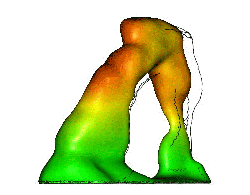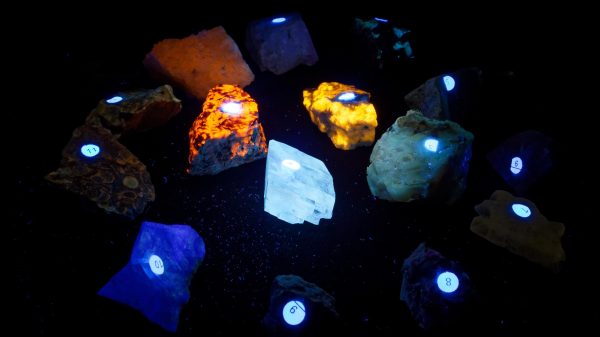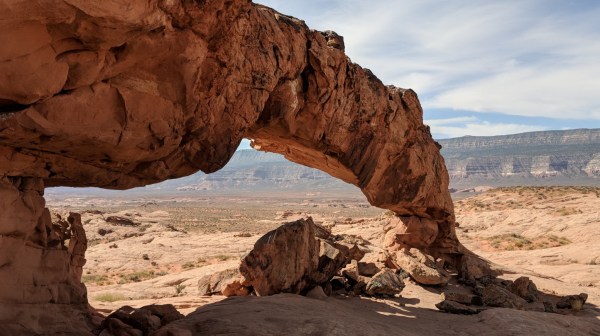January 9 ended up being a very expensive day for a Culver City, California man after he pleaded guilty to recklessly operating a drone during the height of the Pacific Palisades wildfire. We covered this story a bit when it happened (second item), which resulted in the drone striking and damaging the leading edge of a Canadian “Super Scooper” plane that was trying to fight the fire. Peter Tripp Akemann, 56, admitted to taking the opportunity to go to the top of a parking garage in Santa Monica and launching his drone to get a better view of the action to the northwest. Unfortunately, the drone got about 2,500 meters away, far beyond visual range and, as it turns out, directly in the path of the planes refilling their tanks by skimming along the waters off Malibu. The agreement between Akemann and federal prosecutors calls for a guilty plea along with full restitution to the government of Quebec, which owns the damaged plane, plus the costs of repair. Akemann needs to write a check for $65,169 plus perform 150 hours of community service related to the relief effort for the fire’s victims. Expensive, yes, but probably better than the year in federal prison such an offense could have earned him.
geology6 Articles
Peeking Underground With Giant Flying Antennas
Helicopters are perhaps at their coolest when they’re being used as flying cranes — from a long dangling cable, they can carry everything from cars, to crates, to giant hanging saws.
What you might find altogether more curious are the helicopters that fly around carrying gigantic flat antenna arrays. When you spot one in the field, it’s not exactly intuitive to figure out what they’re doing, but these helicopters are tasked with important geological work!
Continue reading “Peeking Underground With Giant Flying Antennas”
DIY Geophone Build Performs Well
If you want to know what’s going on with the ground, geologically speaking, a geophone is a great tool to have. It lets you listen in on the rumbles and grumbles beneath your feet, and can give you great insight into matters of seismic importance. [mircemk] has designed a very capable geophone that’s simple enough for you to build at home.
The geophone relies on a mass suspended upon a spring inside a chamber, which as you might imagine, will move when shaken by seismic vibrations. The mass is in fact a plastic rod, fitted with an iron nut and a magnet on the end.
This is mounted above a coil, which is fixed to the base of the chamber. Thus, when the chamber is shaken by seismic activity, the mass moves relative to the coil, with the coil picking up the varying magnetic field as it dances around.
The YouTube video does a great job of explaining the concepts involved and how to practically build the device. [mircemk] has also had some other great projects featured on Hackaday before, too.
UV Photography Box Is Great For Shooting Fancy Rocks
If you want to shoot photographs of various fluorescent UV-related phenomena, it’s hard to do so when ambient light is crowding out your subject. For this work, you’ll want a dedicated UV photography box, and [NotLikeALeafOnTheWind] has a design that might just work for you.
The build is set up for both UVA and UVC photography. Due to the danger posed by the latter, and even the former in some cases, the builder recommends never using the box with a direct-view camera. If it must be done, the eyepiece should be covered to avoid any exposure to harmful light. The key rule? Never look directly into a UV source.
Light sources that can be used include UV LEDs, lamps, and tubes. The box is sealed to keep out external light. It then features a turntable that can be manipulated from outside the box, allowing samples inside to be rotated as necessary. Using a camera with a macro or wide-angled lens is recommended for the work.
The photographs taken inside the box are stunning. They remind us of childhood museum trips, where we marvelled at the magic of the fluorescent rock displays. We’ve featured some other great fluorescence projects before, too. If you’re cooking up your own great scientific builds in the lab, we’d love to see those too. Hit us up on the tipsline!
The Hunt For The Voice Of Utah’s Arches

In the 1990 movie The Hunt For Red October, a stealth submarine is located by what a computer thinks are seismic sounds, but when sped up, they are clearly mechanical. We won’t spoil it further on the off chance that you haven’t seen. We can’t help but wonder if [Prof. Jeff Moore] and his team at the University of Utah were inspired by the movie. Why so? Because they have taken the seismic vibrations of the beautiful arches in Utah, US and sped them up 25 times, placing them right in the range of human hearing on their Red Rock Tones website. Go have a quick listen. We’ll be right here.
The resulting sound bites are just beautiful, and some of them have an almost eerie underwater tone to them as if driven along by a clandestine propulsion system. But that might just be our imagination running away a bit. That’s likely the point of this scientific exercise, however- taking raw scientific data and making it accessible and somehow relevant to even non-geologists.

[Prof Moore] and his team aren’t just placing seismometers on natural rock arches for the fun of it, even though that does sound like some fun. Instead, they are studying the natural resonances of these rock formations- both the primary frequencies and the harmonics. By monitoring changes in their resonant frequencies over time, they gain an understanding of how the rock is changing- especially as it relates to the impact that humans have on these natural wonders.
What’s more, these audible representations of seismic waves are something that may be possible for the determined hacker. We’ve featured several DIY seismometers such as this hacked USB mouse designed to detect elephants on the move. Could it be sensitive enough for measuring seismic activity? Try it out, and let us know!
Special thanks to [Prof. Jeff Moore] for permission to use the images for this article.
Raspberry Shake Detects Quakes
The Raspberry Pi’s goal, at least while it was being designed and built, was to promote computer science education by making it easier to access a working computer. What its low price tag also enabled was a revolution in distributed computing projects (among other things). One of those projects is the Raspberry Shake, a seismograph tool which can record nearby earthquakes.
Of course, the project just uses the Pi as a cost-effective computing solution. It runs custom software, but if you want to set up your own seismograph then you’ll also need some additional hardware. There are different versions of the Raspberry Shake, the simplest using a single Geophone which is a coil and magnet. Vibrations are detected by sensing the electric signal generated by the magnet moving within the coil of wire. Other models increase the count to three Geophones, or add in MEMS accelerometers, you can easily whip one of these up on your own bench.
The entire setup will fit nicely on a coffee table as well, making it much smaller (and cheaper) than a comparable professional seismograph. Once all of the Raspberry Shakes around the world were networked together, it gives an accurate, real-time view of seismic activity anywhere you can imagine. If you’ve ever been interested in geology or just want to see where the latest earthquake was, check out their projects. But you don’t need even a Raspberry Pi to see where the earthquakes are, thanks to a Hackaday Prize entry all you need is a Twitter account.
Thanks to [Rich Cochran] aka [AG6QR] for the tip!
















